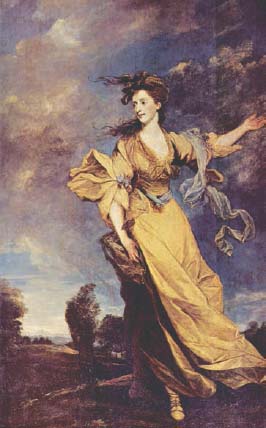Baroque and Beyond C. 1600–1850Neoclassical Art |
What was Joshua Reynolds’ “Grand Manner”? |
Joshua Reynolds (1723–1792) was determined to elevate the status of British painting to that of the great masters of the Renaissance, and one of the ways in which he did this was to infuse his portraits with the grandeur and heroic idealism of the highest form of painting at the time, history painting. In his series of lectures, Fifteen Discourses on Art, Reynolds promoted the idea that contemporary British painters should paint in the “great style” of the old masters. His enormous, full-length portraits, such as Portrait of Jane Fleming, Countess of Harrington (1778) and Lady Sarah Bun-bury Sacrificing to the Graces (1765), incorporate classical elements such as sculpture, vases, and architectural elements into the background to give his paintings an element of antiquity. In the latter portrait, Lady Bunbury is depicted as a Roman priestess with her long Roman dress banded at the waist and pinned to the shoulder. As Lady Bunbury makes an offering to the Three Graces, her friend Lady Susan Fox-Strangways kneels beside her. Reynolds has elevated this aristocratic portrait to a symbolic, meaningful painting that inspires reflection on female friendship and beauty.

The British painter Joshua Reynolds infused this portrait of Lady Jane Halliday with aristocratic poise (1779). Reynolds was interested in elevating the status of British art through his portraits.
